Table of Contents
- Seasons in Thailand
- Peak Season (November to February)
- Shoulder Season (March to May, September to October)
- Off-season (June to August)
- Weather in Thailand
- Visiting Thailand in Spring (March to May)
- Visiting Thailand in Summer (June to August)
- Visiting Thailand in Autumn (September)
- Visiting Thailand in Winter (November to February)
- What to Expect Visiting Thailand in Winter
- Best Times to Visit Bangkok
- Best Times to Visit Chiang Mai
- Best Times to Visit Khao Lak
- Best Times to Visit Phuket
- Popular Times to Visit Thailand
- FAQ
- When's the cheapest time to visit Thailand?
- Is the rainy season safe?
- What to pack?
The Best Time to Visit Thailand: A Seasonal Guide
Thailand packs in lush jungles, bustling cities, and centuries-old traditions. It’s always open for visitors, but timing your trip depends on your plans. Want to soak up local culture, trek through nature, or unwind on sandy shores? Each activity has an ideal season here. Weather patterns shift between tropical heat, monsoon rains, and cooler breezes across regions. This guide breaks down seasonal shifts so you can pick a perfect time for your adventure.
Seasons in Thailand
Thailand has three main seasons: cool, hot, and rainy. Each brings different chances to explore. Weather can shift a lot depending on where you go. Up north might stay mild while southern beaches get downpours. When it comes to Thailand, best time to visit depends on what you want to do. Hike misty mountains? Dry months work. Prefer island hopping? Skip monsoon months. Timing trips around seasons helps avoid surprises.
Pinpointing the best time to travel to Thailand means matching plans with regional weather. Coastal areas often flip between sunny and stormy faster than inland spots. No need to overthink it—just check forecasts for specific zones. Pack light layers for north, rain gear for south. Simple prep goes far.
Peak Season (November to February)

Thailand’s peak season hits between November and February. Cooler temps and less rain make this stretch perfect for exploring outdoors. It’s no wonder crowds show up then—you can soak up natural beauty without sweating through your shirt.
Temples, markets, and festivals keep visitors busy. Picture floating lanterns lighting up the sky during Loy Krathong or strolling through flower-covered streets at Chiang Mai’s Flower Festival. Beaches like Phuket and Koh Samui also shine brightest this time of year. Calm seas and sunny days are ideal for snorkeling or just chilling on sand.
If you’re after some beach time, the best time to visit Thailand is definitely these months. November to February—best months to visit Thailand—balance comfort and adventure. You’ll dodge monsoon downpours and extreme heat, leaving energy for night markets, island hopping, or snapping pics of golden temples. Just book early; everyone wants a slice of this weather window.
Shoulder Season (March to May, September to October)

If you’re wondering about the best time of year to visit Thailand, shoulder seasons might surprise you. Thailand’s shoulder periods split into two windows: March-May and September-October. Weather tends to stay warm, crowds thin out, and experiences feel less rushed.
March to May shifts into hotter weather. Central and northern areas get especially toasty. But don’t let that scare you off. It’s a great chance to join April’s Songkran Festival—think streets alive with water fights celebrating Thai New Year.
For Thailand in September, things start drying up after monsoon rains. Showers taper off by October, making it easier to wander temples or markets without battling umbrellas. Bonus? You’ll find shorter lines at popular spots and more space to savor street food staples like pad thai or mango sticky rice. Both seasons balance comfort and culture, just pack light clothes and a sense of adventure.
Off-season (June to August)
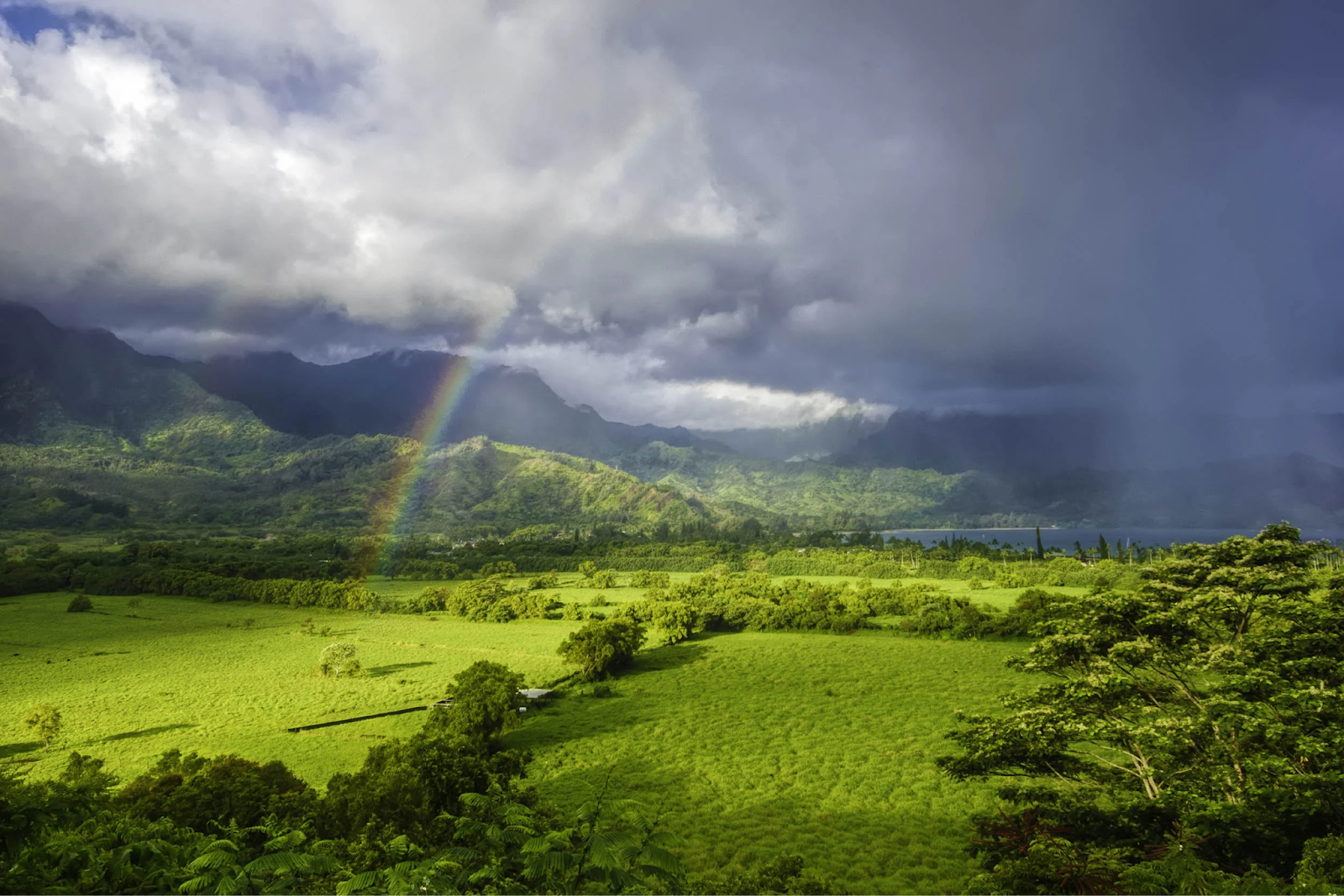
From June to August, the rainy season Thailand faces transforms landscapes into vibrant shades of green. Sure, skies might unleash sudden downpours—pack a lightweight rain jacket—but crowds thin out, and prices drop. Imagine trekking through misty jungles in Khao Sok National Park, trails quiet except for rustling leaves. Rice paddies glisten under gray skies, and waterfalls swell with fresh runoff.
This time of year isn’t just about dodging raindrops. With fewer tourists around, you’ll chat more with street vendors or join locals sipping iced coffee under market awnings. Hotels slash rates, and flights cost less—ideal for stretching your budget. While beaches face rougher waves, inland adventures thrive. Think muddy hikes, river kayaking, or just breathing in air heavy with petrichor.
Weather in Thailand
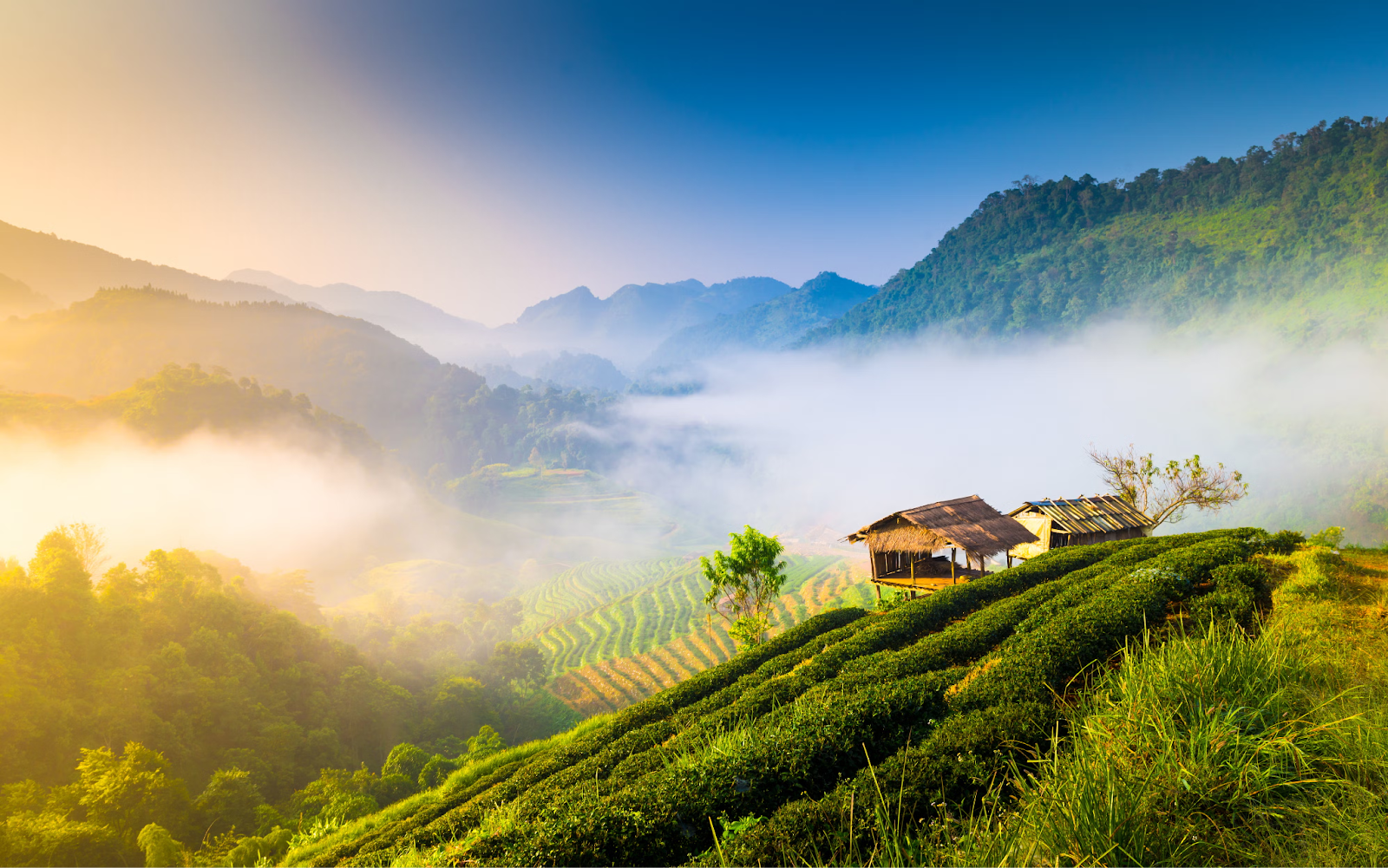
Thailand doesn’t have one-size-fits-all weather. Up north, the cool season brings drier air and milder temps—perfect for hiking. But head to central plains during hot months, and you’ll sweat through 40°C (104°F) days. When rains arrive, southwest monsoon dumps heavy downpours—southern spots like Phuket and Krabi see most. Pack light layers for heat, waterproof gear for coast trips, and check forecasts before booking tours or treks.
Visiting Thailand in Spring (March to May)

Spring in Thailand runs March through May. Expect heat here—temps often hit 30-35°C (86-95°F). Coastal spots like Koh Tao and Similan Islands become hotspots now. Clear waters make snorkeling great; you’ll spot colorful fish easily.
Visiting Thailand in April allows you to see the Songkran Festival. Streets turn into water fight zones celebrating Thai New Year. Locals splash passersby, share meals, host parades with traditional dances. It’s all about community joy during these months.
Visiting Thailand in Summer (June to August)
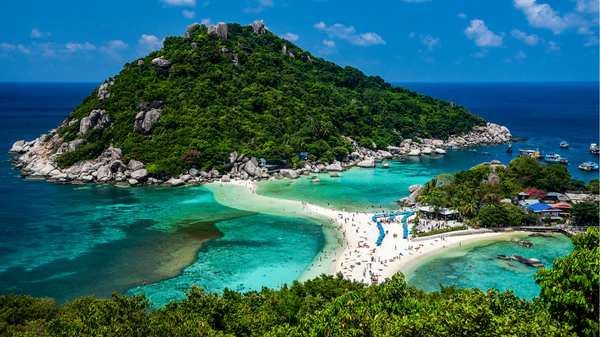
Summer in Thailand means rain, but there’s still loads to do. Visiting Thailand in August lets you see landscapes at their greenest—waterfalls gush, jungles thrive, and trails in places like Doi Inthanon or Erawan National Parks turn into muddy adventures. Higher up, mountains stay cooler, giving a break from sticky heat.
Thailand in June is home to the Phi Ta Khon Festival, where villages burst with masks, dancing, and stories about spirits. It’s wild, loud, and totally local. Mornings often stay dry, so you can hit temples or markets before afternoon showers roll in. Just pack a rain jacket and go with it. Rainy days mean fewer crowds, cheaper stays, and scenery that feels straight out of a postcard.
Visiting Thailand in Autumn (September)

September is the best month to visit Thailand for those wanting to hit a sweet spot in the nation’s weather cycle. Rain eases up, temps dip a bit, and northern spots like Chiang Mai or Chiang Rai really shine. Scenery stays lush, skies stay clear—no sweat-drenched sightseeing here.
Countryside bursts with greenery now—ideal for hiking trails or checking out rural villages. Harvest season means markets overflow with fresh stuff, and street food stalls serve up peak flavors. Don’t miss moonlit festivals where paper lanterns float skyward and mooncakes get passed around—authentic local traditions without huge crowds.
Visiting Thailand in Winter (November to February)

Winter is the peak season for travelers chasing ideal weather. Beach spots like Phuket, Krabi, and Gulf islands such as Koh Samui hit their stride—think cloudless skies, calm seas, and temps just right for snorkeling or lounging on sand. Up north, days stay cooler, perfect for hiking trails or checking out old temples and hill tribe villages. Visiting Thailand in February lets you see the Chiang Mai’s Lantern Festival. The night sky fills with glowing lanterns, creating a magical vibe.
What to Expect Visiting Thailand in Winter
What’s winter like here? Days stay warm but not too hot, and rain’s rare. It’s prime time for mixing adventures: paddle through emerald waters one day, wander bustling Bangkok night markets the next. Major events include Chiang Mai’s lantern release and New Year parties in cities, where fireworks light up skylines. Whether you’re kayaking in Ao Thalane or sipping fresh coconut on a beach, winter sun keeps things cozy without the sweat. Visiting Thailand in January is really popular, since it’s hours of sunshine and almost no rain.
Best Times to Visit Bangkok
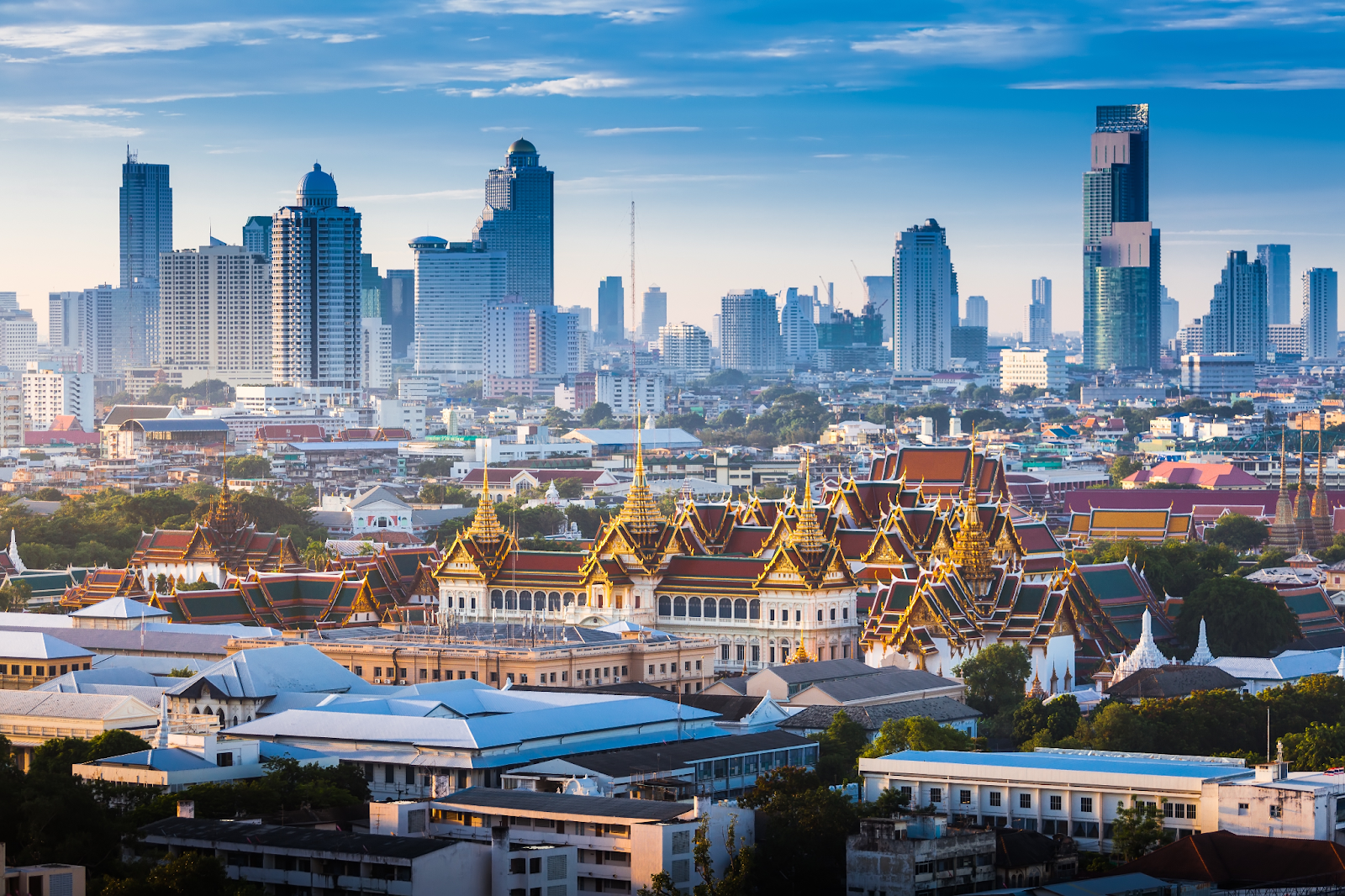
Bangkok shines brightest between November and February. Temperatures drop just enough to make exploring bearable, even enjoyable. This window offers ideal conditions for soaking up everything the city’s known for—buzzing nightlife, riverside markets, temples that glisten in dry-season sunlight.
Grand Palace stays open year-round, but wandering its courtyards feels less like a marathon when humidity eases. Same goes for Chao Phraya boat trips or hunting down mango sticky rice at sidewalk stalls. No sudden downpours to cut adventures short.
Evenings become prime time too—night markets stay lively longer, rooftop bars serve cocktails with breezy views instead of sweaty ones. Crowds? Sure. But that energy’s part of what makes the city click during these months.
Best Times to Visit Chiang Mai
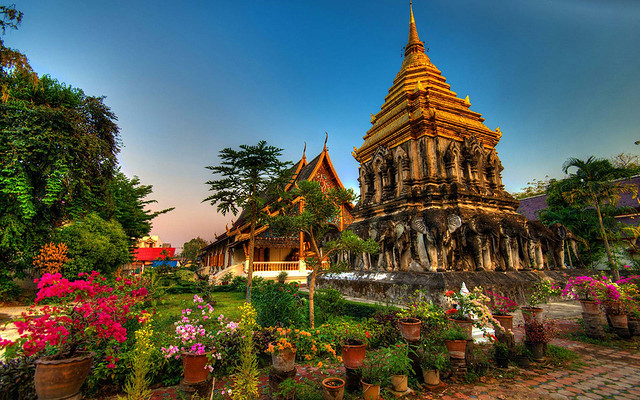
Plan a trip to Chiang Mai between November and February. That’s when temperatures drop, skies clear up, and exploring becomes a breeze. Spend days checking out temples, hiking trails, bike paths—outdoor fun’s easy here. Don’t miss cultural highlights either: Lantern Festival lights up the calendar alongside Flower Festival parades—both give real glimpses into how locals celebrate. Cooler weather’s also prime for mountain treks or ethical elephant encounters nearby.
Best Times to Visit Khao Lak
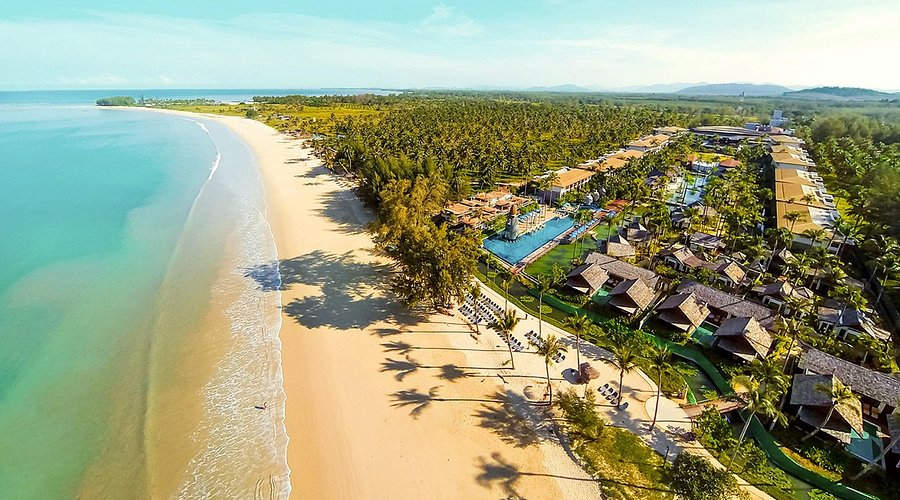
Plan a Khao Lak trip November through February. Sandy stretches stay quiet, the ocean turns crystal—perfect for underwater adventures. Hit Similan Islands during these months; it’s a world-famous dive spot where reefs teem with sea turtles and neon fish. Snorkel by day, lounge on empty beaches by afternoon. Dry weather also means trekking through jungle-covered national parks or poking around nearby villages feels way more enjoyable without sticky heat.
Best Times to Visit Phuket
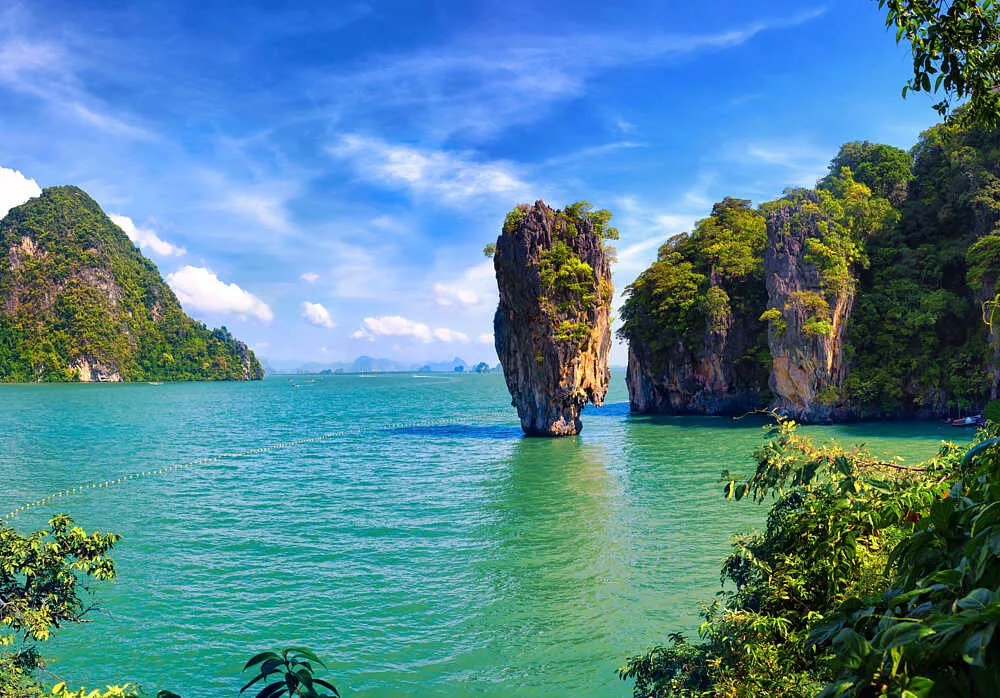
Phuket’s really great between November and April. Expect sunny skies and calm waters during these months. It’s perfect for beach days, hopping between islands, and lively nights out.
Try jet-skiing or parasailing if you’re up for action. Take boat trips to Phi Phi or James Bond Island for exploration. Unwind afterward at luxury resorts.
Patong Beach buzzes with energy, but quieter spots let you chill by the waves. Whether you want excitement or peace, there’s a stretch of sand to match your vibe.
Popular Times to Visit Thailand
Thailand hits its peak season between November and February, thanks to comfortable climate and festivals packed into these months. Cooler temps draw crowds globally—beaches, cities, and cultural spots buzz with energy. But consider shoulder months if you prefer relaxed trips: less crowded streets mean easier exploration and chances to connect with communities during quieter traditions. Every season brings something different, whether it’s sunny skies or misty mornings, so Thailand stays appealing no matter when you go.
FAQ
When’s the cheapest time to visit Thailand?
For budget travelers, the best time to visit Thailand is off-season from June to August. Flights and hotels often cost less. Grab deals on tours and stays. Exploring the country becomes more affordable during these months.
Is the rainy season safe?
Yes, it’s generally safe. Expect sudden downpours and possible delays, but regions remain enjoyable. Plus, landscapes turn lush and vibrant. Keep a waterproof jacket handy.
What to pack?
Go for light clothes, sunscreen, a hat, and comfy shoes. Toss in a raincoat or umbrella if visiting during rainy months. Don’t forget swimwear for beaches and modest outfits for temples.
